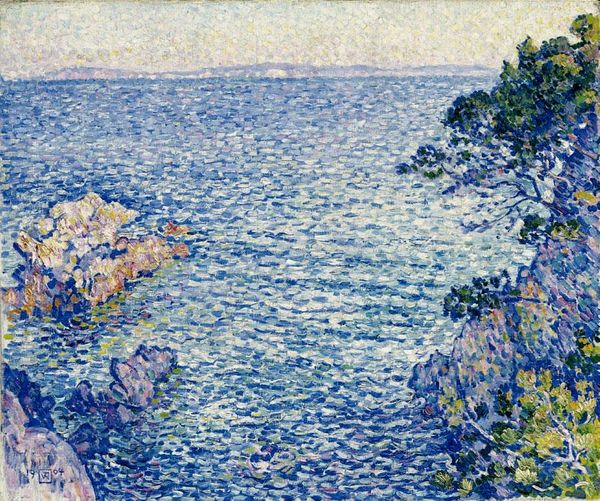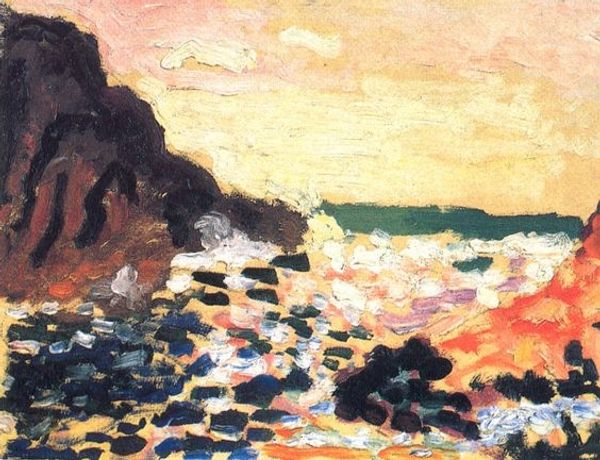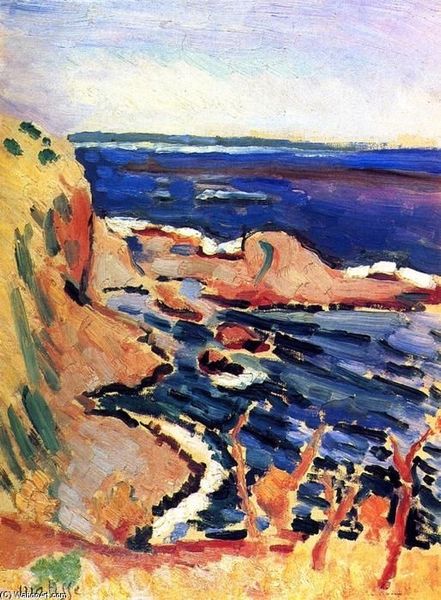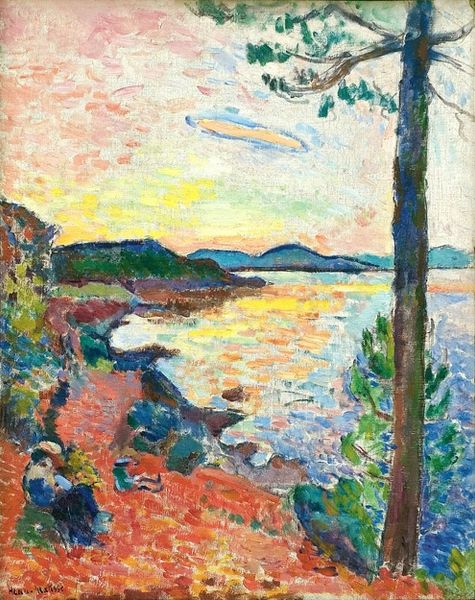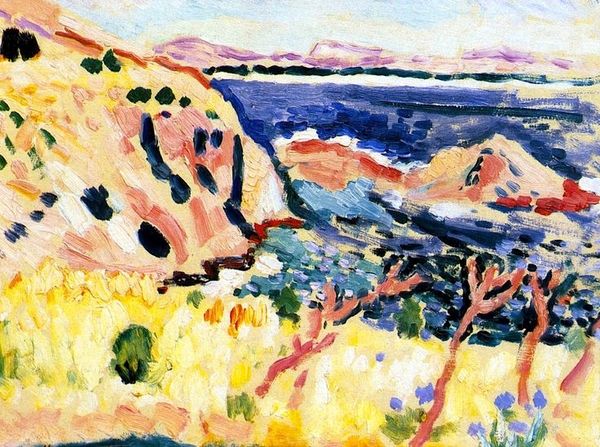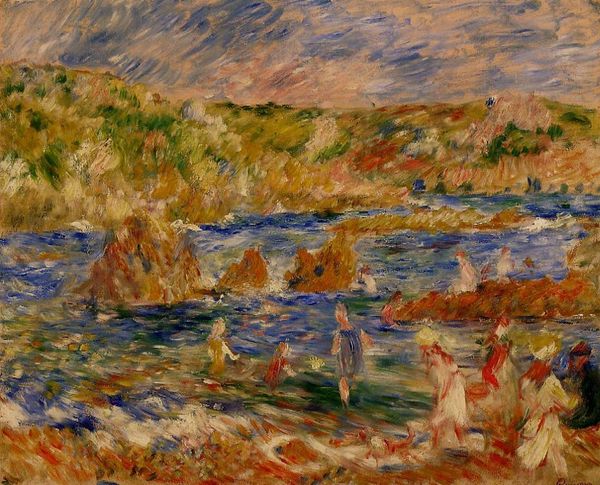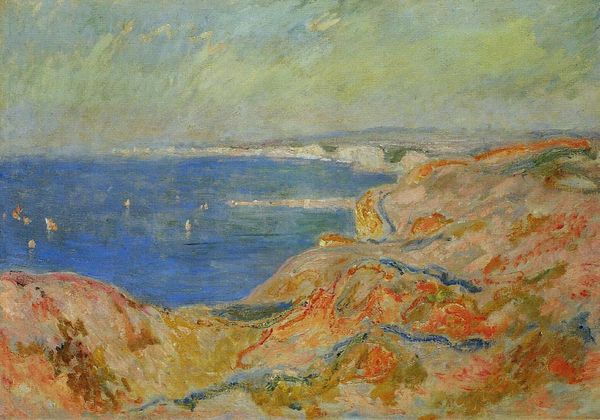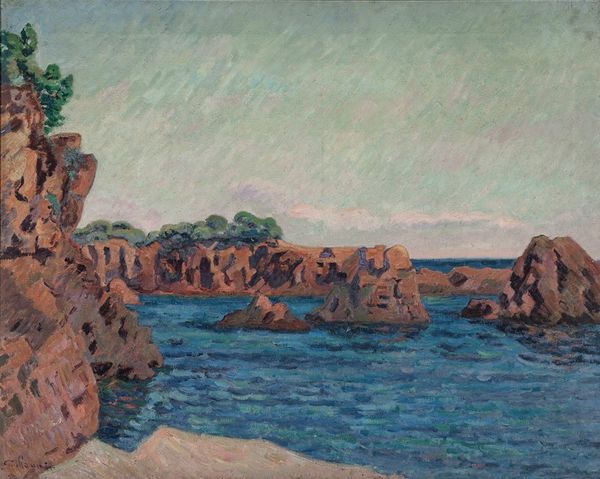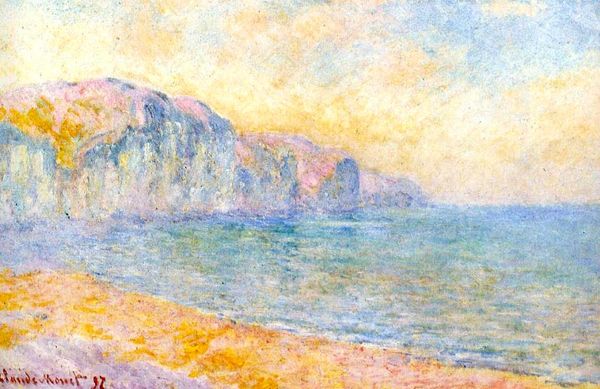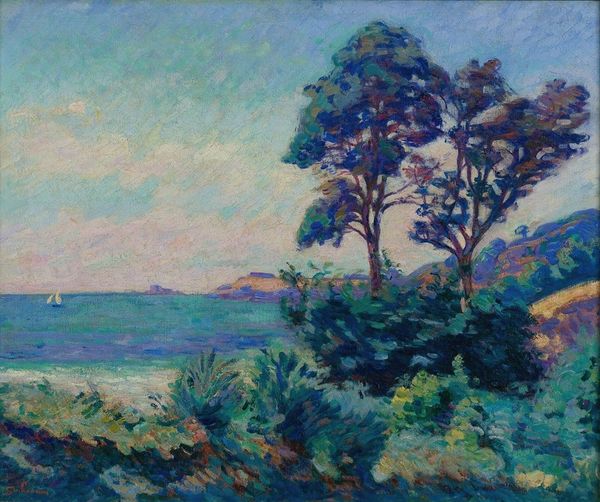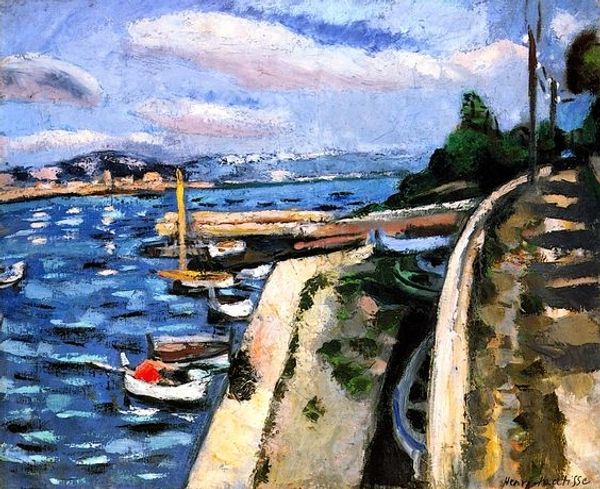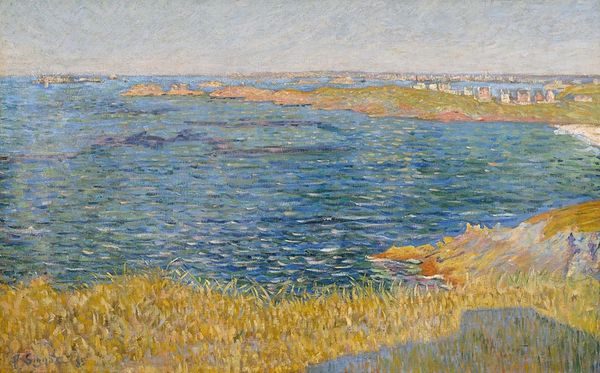
Dimensions: 24 x 19 cm
Copyright: Public domain
Curator: Welcome. We’re looking at Theo van Rysselberghe's "Midi Landscape," an oil on canvas created around 1910. It's part of a private collection. Editor: Immediately striking. There's something about the density of the brushstrokes, the way the colors both vibrate and harmonize… it feels intensely alive. Almost tactile. Curator: That’s typical of van Rysselberghe's post-Impressionist style. The divisionist technique—those individual dots and dashes of color—were a deliberate effort to capture light and atmosphere, and connect to broader ideas around perception. The turn of the century was full of optical theory, and many artists were trying to visually portray it. Editor: And politically speaking, this "Midi Landscape" comes from a moment of intense labor and social unrest, yes? How does the artwork engage or perhaps evade those societal tensions? Does it function as an escape or a more subtle reflection on the changing times? Curator: That's a vital question. Certainly, artists weren't always explicitly engaging, but their stylistic choices were always deeply entwined. Van Rysselberghe comes to pointillism a bit later, so his technique isn't a youthful rebellion so much as a professional's exploration. Editor: I agree, though his personal exploration with this medium and the application creates a soothing vista. Notice the rugged cliffs, and that gnarled tree clinging to the coast; a symbol of resilience. Also note the serene sea... which could mask a multitude of things below the surface, metaphorically of course. What feelings do we get from this peaceful, natural setting? Are they straightforward or laden with socio-historical weight? Curator: These landscape styles did a lot of work as symbols of nation, of industry, or as simply luxury commodities meant for consumption. Consider the painting's existence today as something privately owned—as are the landscapes and access to them in many places—in that way its status mirrors contemporary geopolitical trends. Editor: Yes, absolutely. Thinking about art's relationship with ownership and commodification always brings so much into focus, particularly when considering works that seem at first glance purely aesthetic. Curator: Indeed. Thanks for providing such a stimulating reading. Editor: My pleasure. Looking at art as both image and object, we continually renegotiate the narratives we accept, or choose to subvert.
Comments
No comments
Be the first to comment and join the conversation on the ultimate creative platform.
